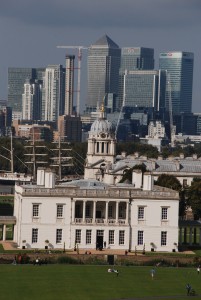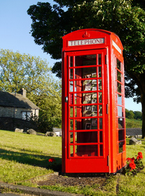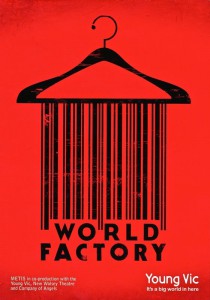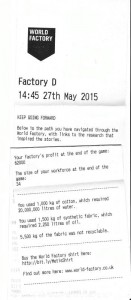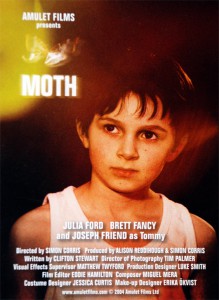The term, ‘genre’, is used widely by critics, writers, audiences, and those in the creative industries from painters to filmmakers and games developers. This term ‘genre’ is seen by many as an outrageous constraint on their artistic freedom and reject outright the idea of working to meet genre expectations. Other creatives are keen to create a certain type of work for which there is a ready audience but are frustrated by the lack of clarity, in books and articles, studios, colleges and general conversation, about what these genre expectations are. For everyone, not just the person beginning their creative journey, this is a confusing area.
Genre Confusion
Genre is one of those words that everyone uses but few people can actually explain. We all know what we mean by saying we are going to watch a Sci-Fi movie or reda a Sci-Fi novel. But when asked to identify what makes it a Sci-Fi as opposed to a soap few of us would have a complete answer. You only have to think of Star Trek, or Babylon Five, Third Rock from the Sun, to start seeing the crossovers.
Distributors and exhibitors often misrepresent a work’s genre when selling a it to an audience, reader, player or buyer. This, and the lack of clarity in academic texts, compound this general confusion.
The problems with genre labels
Industry Labels
The label, romantic comedy, is now readily attached, to any narrative, which has a romance story and is slightly, or predominantly, comedic. The problem is the presence of these two elements does not, in themselves, mean anything. The differences between Hitch and Castaway or Sex and the City illustrate how diverse the range of films, which have a romance story in them and with varying degrees of comedy, can be lumped under the label, ‘romantic comedy’. The same is true of novels, television series, webseries, and to a lesser extent games.
However, this use of labels, and its currency with audiences and creators desperate to find some common ground on which to identify diverse and often difficult narratives, has led to a confusing and almost useless set of terms which generally go under the term genre. They may sell but in and of themselves they do not help a creative identify which genre they are working in and what narrative elements they may wish to keep or use within any given genre.
Academic Answers
Within academia, the term genre has also been a source of confusion. Academics wrote on genre to a large extent in the English language during the Fifties and Sixties. The majority of this writing attempted to find narrative elements which were exclusive to one genre and not another: in other words, to find the essence of a genre. This led, in one instance, to The Western being defined by the idea that people rode horses, wore hats and carried guns.
In 1987, Tom Ryall, analysing the gangster film, identified a relationship between the film, the audience and the film’s creators, which laid the foundations for a system of genre analysis based upon a set of rules, norms of style, narrative form, subject matter and themes (see Ryall T, Genre in Film Criticism, BFI 1987).
Genre as a Framework
Developing the ideas in Ryall I worked up a new genre framework for screenwriters in ‘The Art and Science of Screenwriting’ (Intellect 1999). Since then this framework of genre has been successfully used with regard to plays, novels and games. The key is to recognise the defining qualities of genre rests with the audience not the creator. Here is a simple definition.
Genre is a set of patterns and particular combinations of narrative elements that audiences recognise, and use, when engaging with a creative work.
Note: Narrative here does not refer just to a story based work, but to the totally of a work which may embrace elements of style, sound, medium, dramatic form as well as story.
Over time, audiences build up a recognition of these patterns in films, books and television. They then use them when viewing new narratives. This memory of narrative patterns is in turn used by creatives to establish a set of expectations within audiences. These patterns vary to some degree over time and can be combined in several different ways.
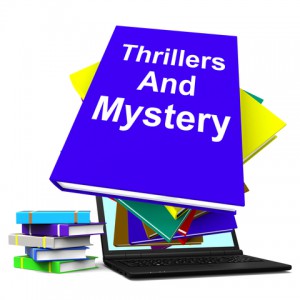
The difficulty with identifying genres is the flexibility of the various narrative elements, and the problem of shared elements within and across genres. However, all genres have two distinct patterns or sets of elements. These are the primary elements, which separate them from other genres, and the secondary elements, which differentiate the different types within a genre. Investigative and action thrillers are different types of thriller, for example. Similarly, the romance genre, as shown below, has several sub-genres.
- Primary elements
These work in much the same way as stories do, providing known points of reference for the audience which allow them to concentrate upon the particulars of this narrative. These elements are found in all the works that belong to the genre group, and are normally evident within the first two sequences of the narrative.
- Secondary elements
This set of elements differentiates one type of narrative from another within particular genre groups, in essence defining the sub-genres.
Genre – framework definitions
The following is a brief overview of the romance genre as an introduction to how this genre framework works
“Gravitation can not be held responsible for people falling in love.” – Albert Einstein
Romances
This genre has three sub genres: romantic comedies, where love conquers all, dramatic romances, where love comes at a cost, and, finally, tragic romances, where love has been lost, and something else has taken its place.
The primary elements of the romance genre are:
- The two central characters are both involved in romance stories. If it is a triangular romance, then the third character is also involved in a romance story.
- The central protagonists have an equal weight in terms of narrative time spent with them, and the level of problems they have to overcome to realise their goals.
- The narrative is focused on one of two themes: the desire for love or the desire for pleasure.
- There is no separate main antagonist i.e. the two main characters are each other’s antagonist.
- The main plot structure is formed by the romance stories of the central protagonists.
- Secondary characters are used to provide contrasting outcomes for the central characters, and to move the plot along.
- The dominant style is naturalist, but expressionism and fantasy can be used.
The secondary elements that define the three types of romance genre are:
The Dramatic Romance
- The narrative centers on the question – what is value of love?
- The plot aims to establish the existence of love, and then to place it in conflict with other human needs or sources of love.
- There are two or three central protagonists.
- The main motivation of the protagonists is to satisfy their sense of loss/loneliness, but they have other equally pressing demands in their lives.
- A main secondary character is also usually involved in a romance story, this storyline is used to illustrate a possible outcome for the main characters.
- All other secondary characters are merely there to provide narrative information, additional dramatic problems or illustrate the theme of the narrative.
- The narrative is dialogue driven, in that it is the psychological motivations of the characters, revealed in dialogue, which initiate action.
- A singular location is common, though this could be a city or community. It contains and illustrates the problems the central characters face to fulfil their love.
Examples of this type are: The End of the Affair, Sex, Lies and Videotape, Ju Dou, Brief Encounter, Bridges of Madison County, The Edukators, The Theory of Everything.
The Romantic Comedy
‘Don’t forget I’m just a girl, standing in front of a boy, asking him to love her” – Richard Curtis
- The value of love is taken as a given. The purpose of the narrative is to illustrate how true love conquers all.
- The plot is driven by a combination of external barriers and the issue of the two main protagonists committing themselves to the relationship.
- The two main protagonists face innumerable barriers to establishing their relationship and recognising that they are in love with each other.
- One of the protagonists normally believes that they could be meant for each other early in the narrative, but the other resists this conclusion.
- The central characters do not necessarily develop substantially through the narrative. The character arc, or growth, is merely, ‘Will they or wont they discover this is the person for them?’ and, ‘When will they both end up realising this?’ The change is more often in circumstances not inner journeys
- Secondary characters provide the source of the main dramatic developments in the plot.
- The narrative is a combination of action driven and dialogue driven sequences, the balance being dependent on the style of the narrative.
- The aim of the plot is to provide as many comedic moments as possible between the two central protagonists, their environment or other characters.
- Multiple locations are the norm.
- Secondary characters stories can dominate sequences within the narrative, but always with one of the protagonists present. This provides for a wider point of view than in the dramatic romance.
Examples of this type are: Four Weddings and a Funeral, Annie Hall, Clueless, When Harry met Sally, Hitch, Tangled.
The Tragic Romance
- The value of love is taken as a given for one of the protagonists. However, the other protagonist has substituted something, normally money or power, as the object of desire and is, therefore, ultimately not capable of sharing the love of the first protagonist.
- The two protagonists are involved in a romance, but it is a tragic one as their very natures mean it must end in one or both being destroyed.
Note: This is not about tragic endings. Some of the most memorable Dramatic Romances end in death/separation, but this not implicit in the characters’ relationship with love. It arises from the circumstances surrounding the romance. In the tragic romance, it arises from the nature of the characters themselves.
- Secondary characters reveal the true nature and intentions of the protagonists.
- The plot aims to provide as many surprises and twists as possible in terms of what is the real motivation of the person who has substituted something for the love of another.
Therefore, it is crucial that the audience believe that both protagonists are really be in love, but as the narrative unfolds realise this is not true.
- The narrative is dialogue driven, but action provides the main revelations in the plot.
- Secondary characters’ stories can dominate some sequences, but always with one of the protagonists present.
- Sex, or sexual attraction, plays a significant part in the motivation of the love-oriented protagonist.
Examples of this type are Body Heat, Double Indemnity, The Last Seduction, Dangerous Liaisons, Raise the Red Lantern, Un Coeur en Hiver and Atonement, Lust Caution.
The other three main genre frameworks are
Personal Dramas – individuals journey towards a goal
Thrillers – ranging from investigative to psychological
Horror – dealing with monsters and demons.
I hope this helps you identify, and work with the genre you are creating in no matter what the nature of your dramatic world is.
For me, genres are a way for people to easily categorize music. But it does not have to define you. It doesn’t have to limit you. – Taylor Swift
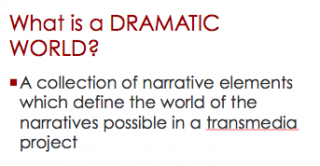 Using the template- see Dramatic World blog – provided by BCre8ive, the aim is to enable students to create and build Story Worlds over a twelve-week period that can then be fed directly into the online initiative. The module has attracted an initial cohort of 27 students.
Using the template- see Dramatic World blog – provided by BCre8ive, the aim is to enable students to create and build Story Worlds over a twelve-week period that can then be fed directly into the online initiative. The module has attracted an initial cohort of 27 students.


